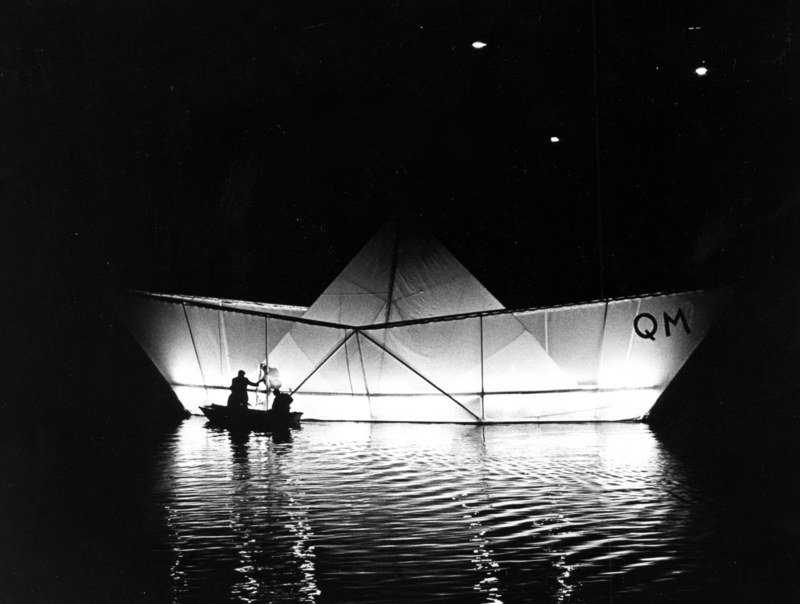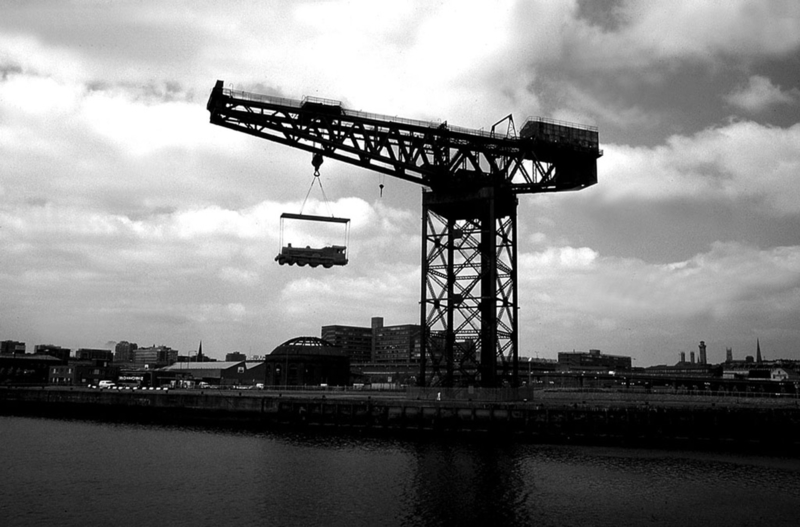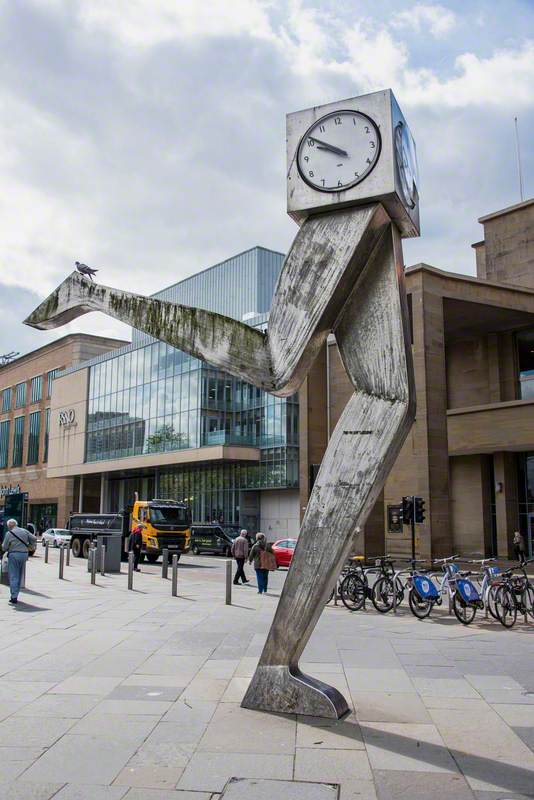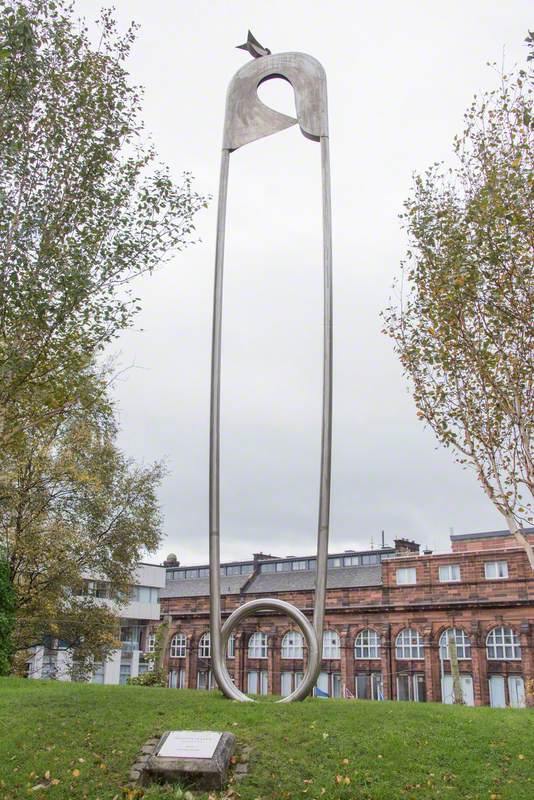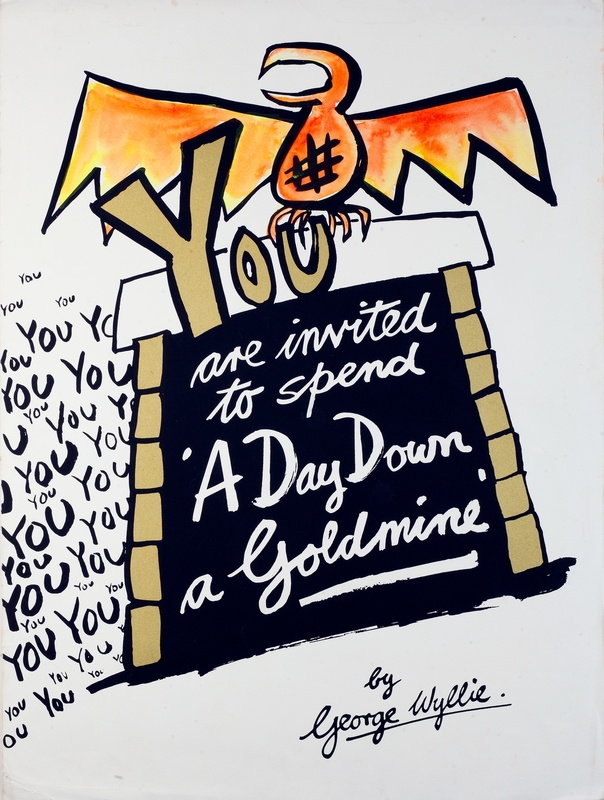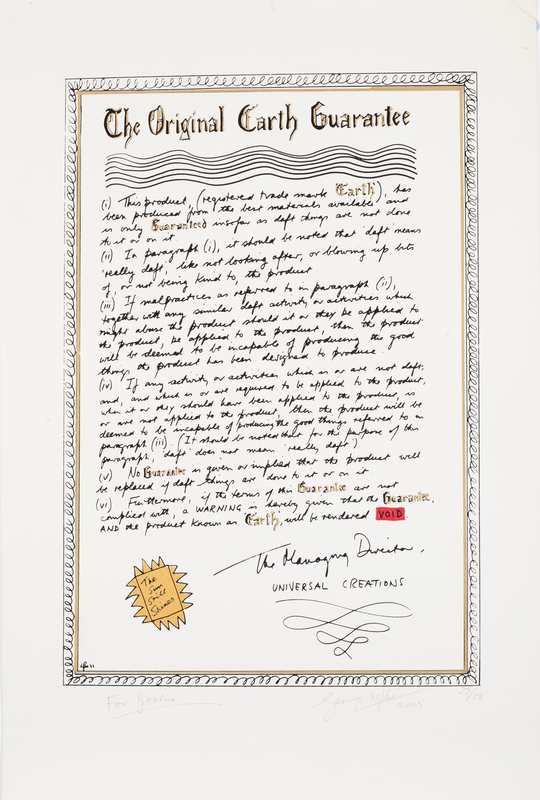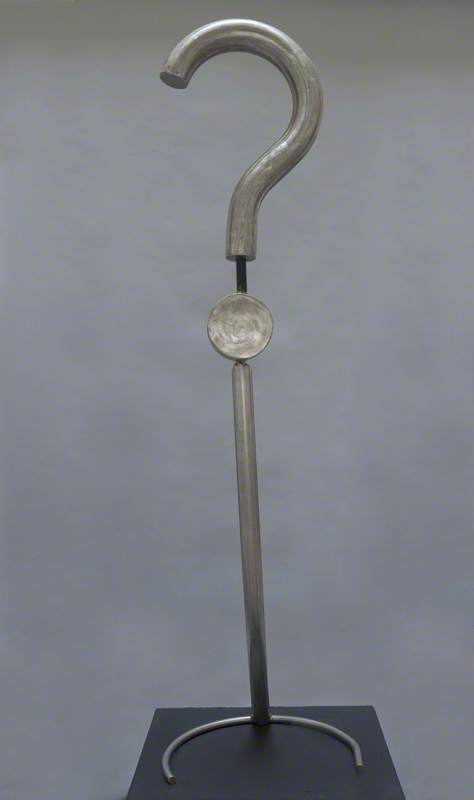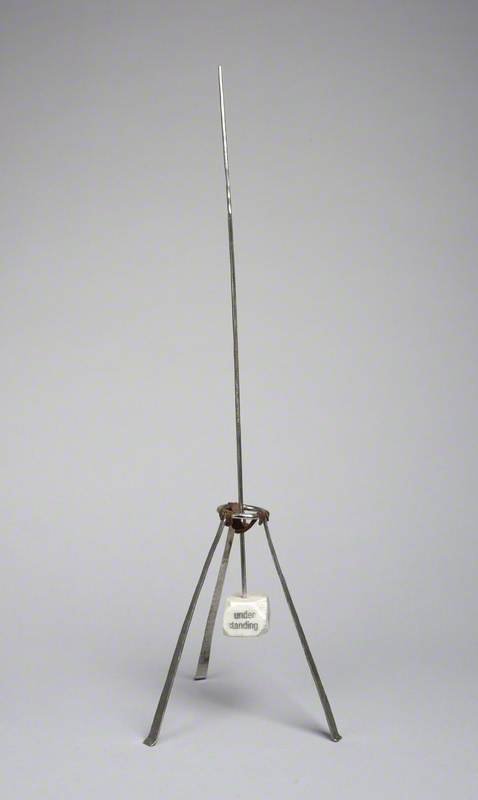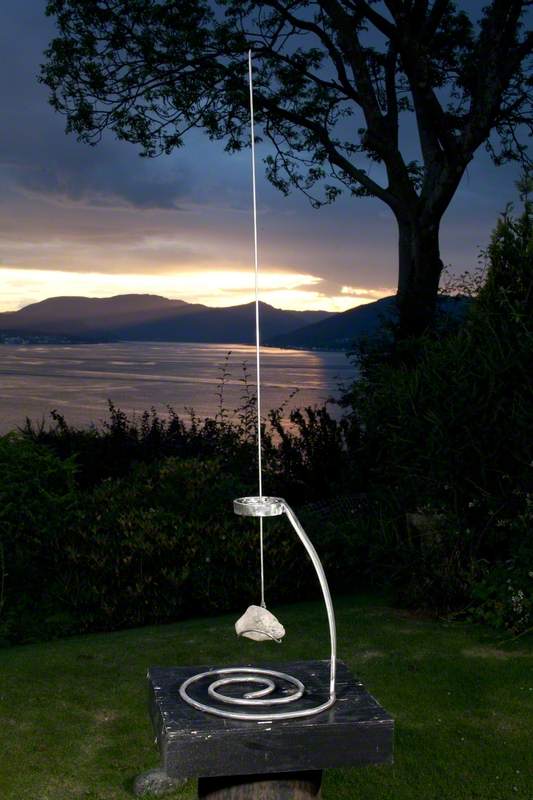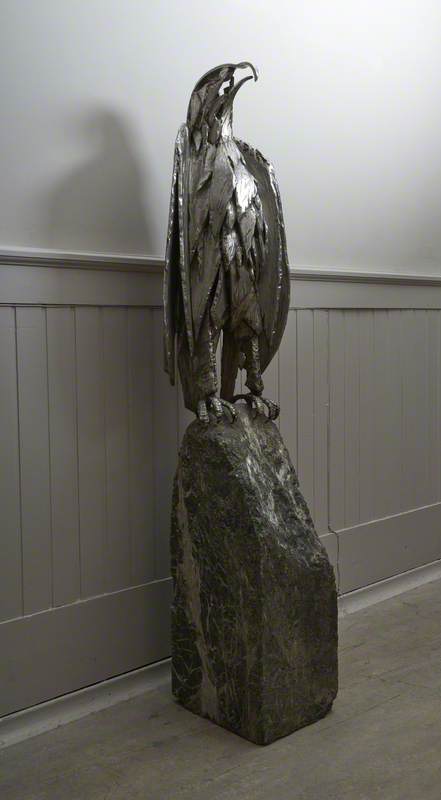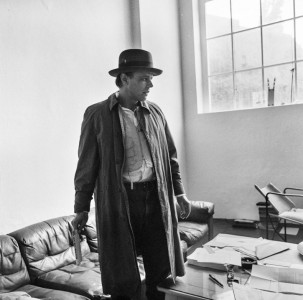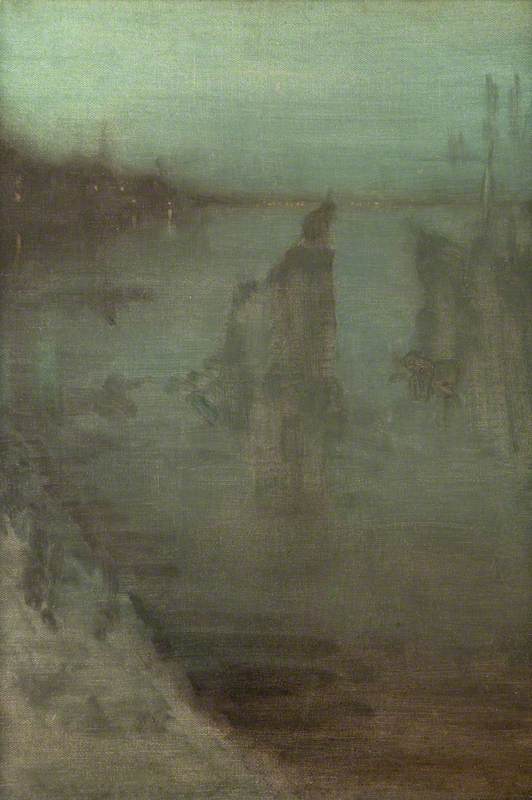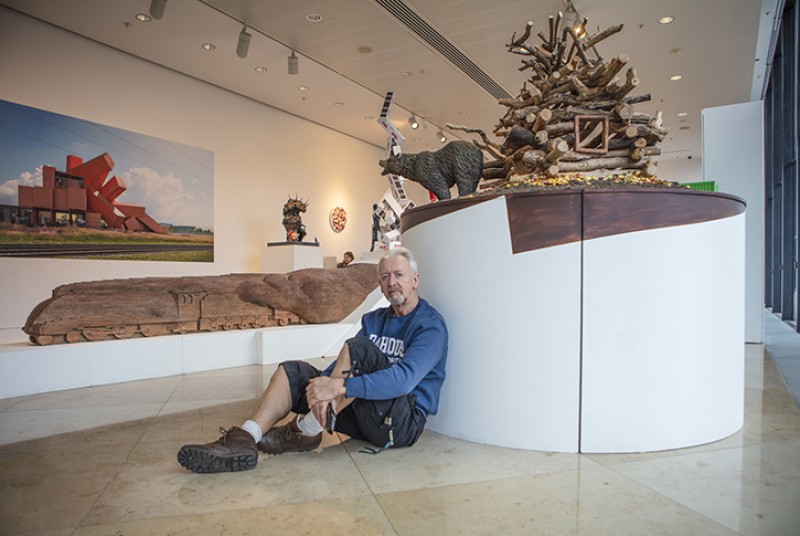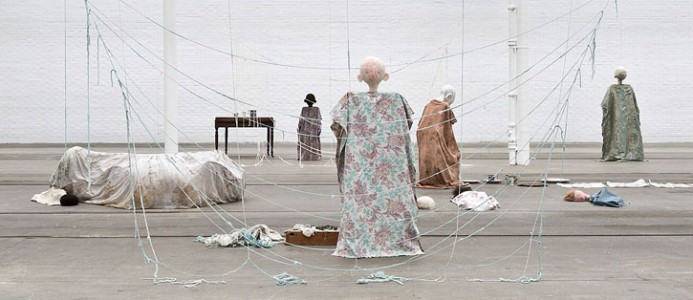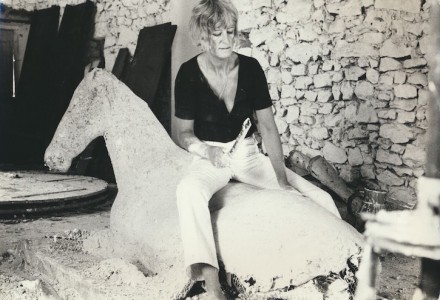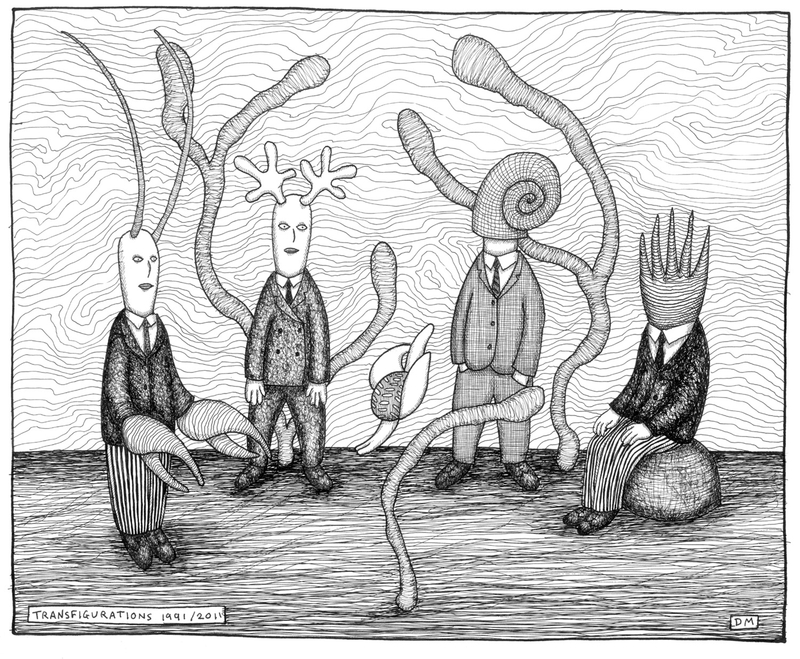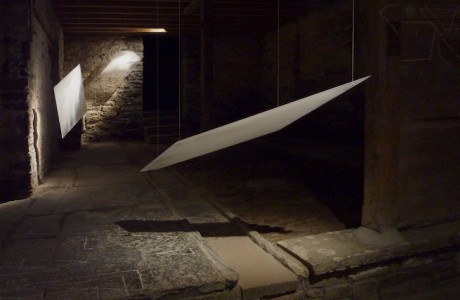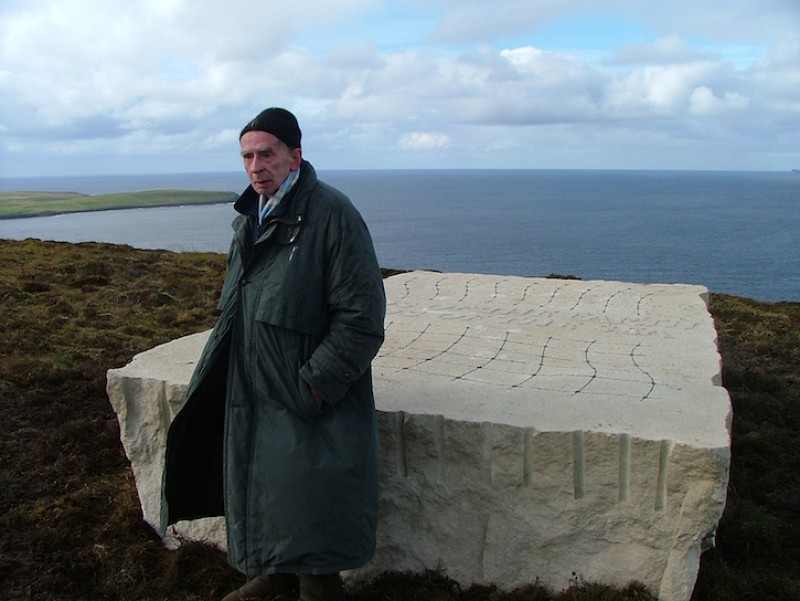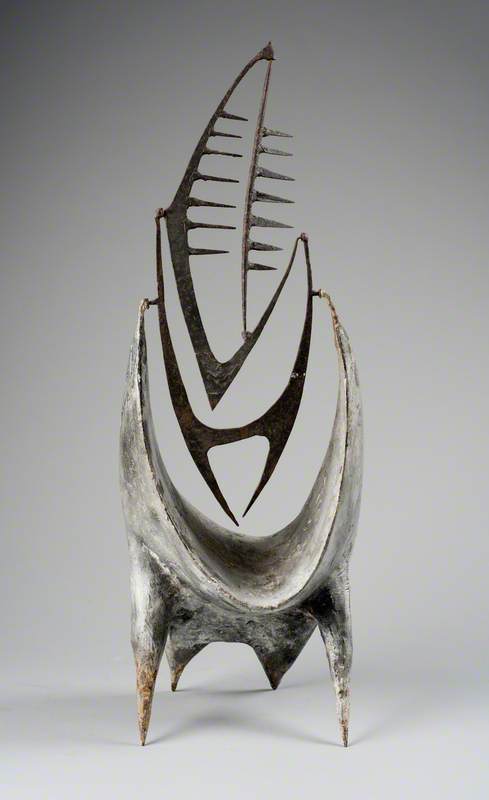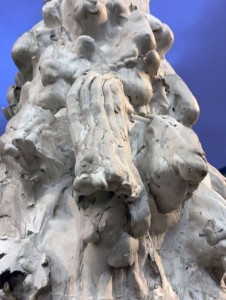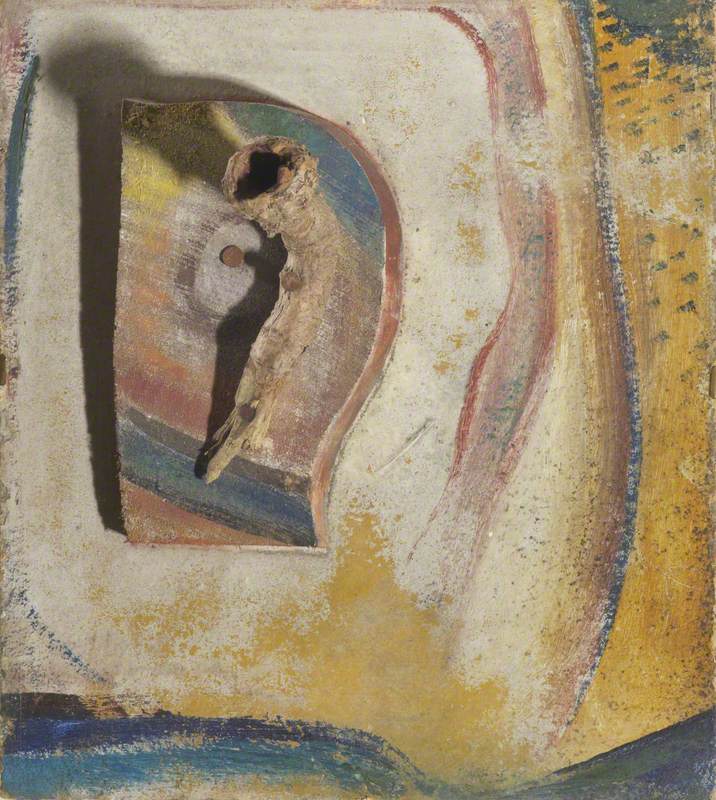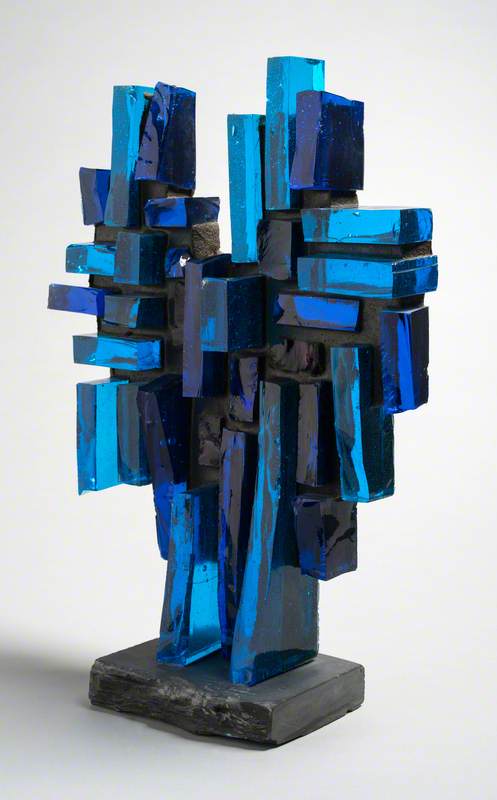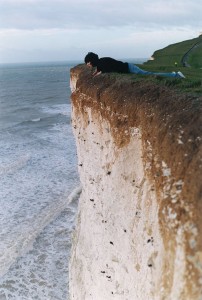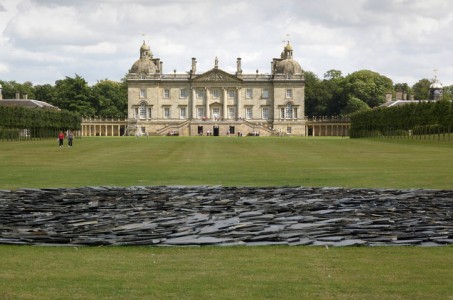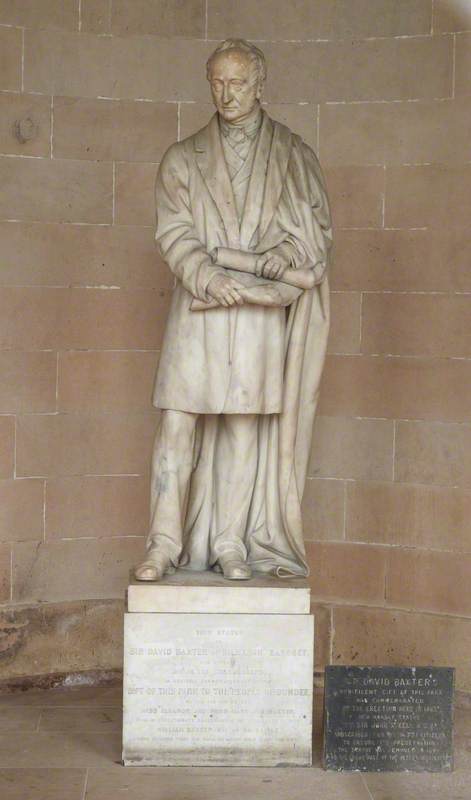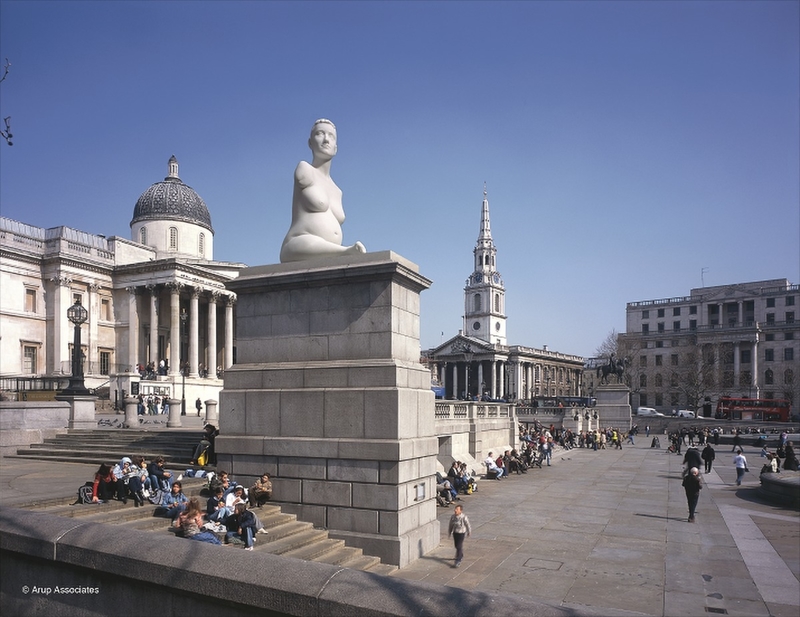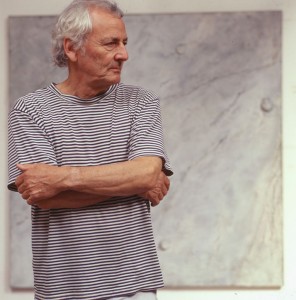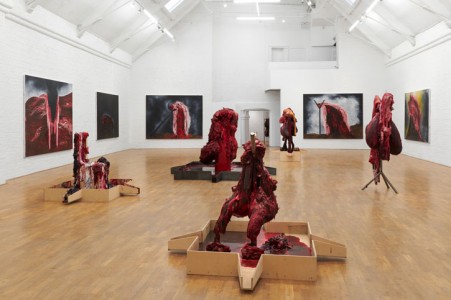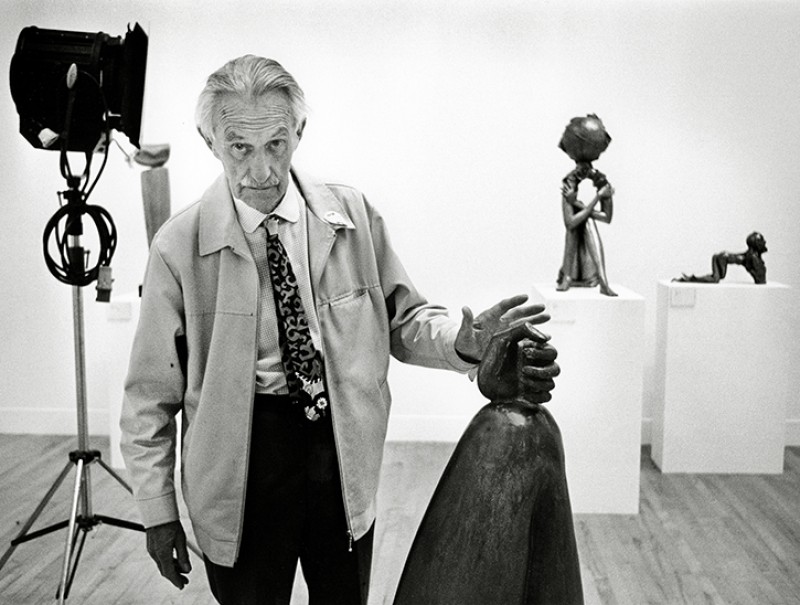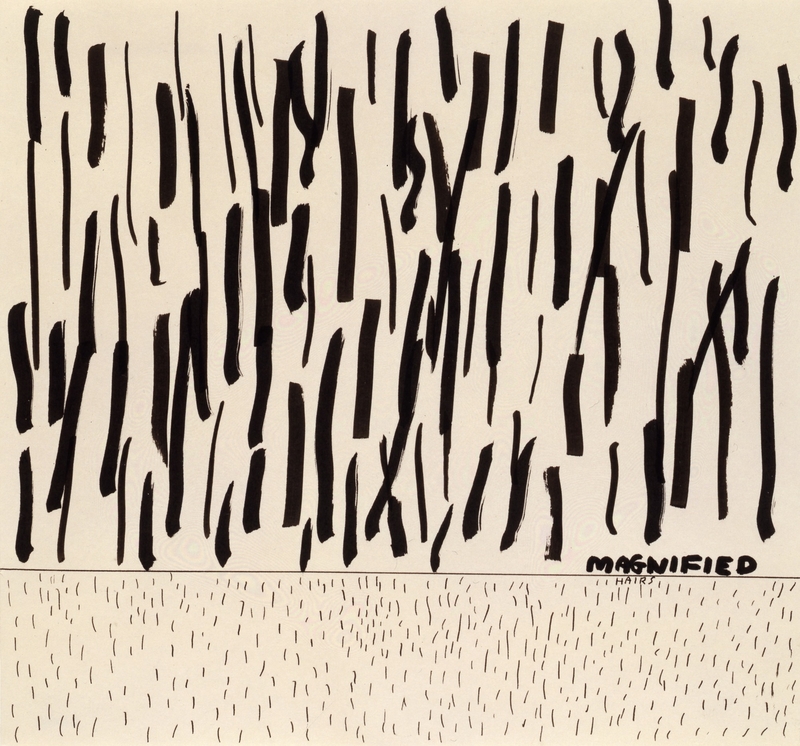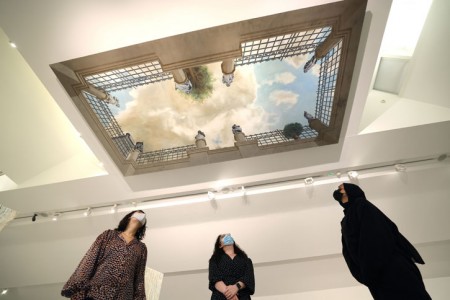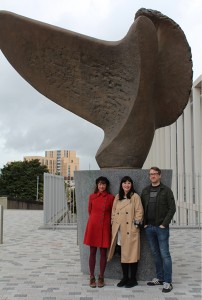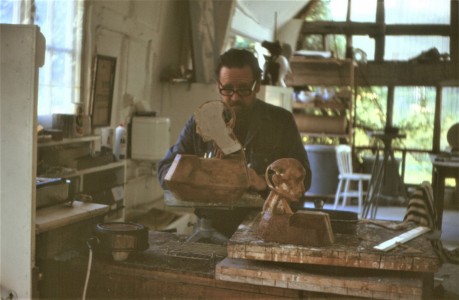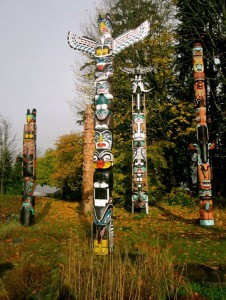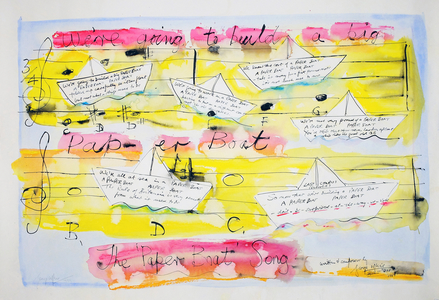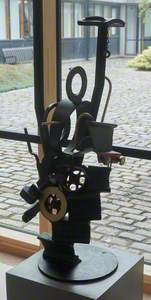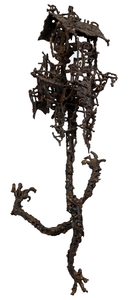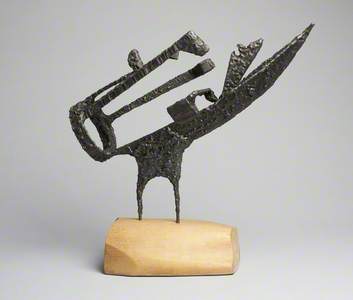When George Wyllie was born, on the last day of 1921, the weather in his native Glasgow was – to use a good Scots word – dreich. As reported in The Glasgow Herald at the time, it had been raining solidly for days. Boats on the River Clyde were straining on their moorings as the water inched up to record high levels.
In contrast, almost seven decades later in May 1989, when Wyllie launched his giant Paper Boat under the Finnieston Crane, the sun shone and a gentle breeze wafted up the Clyde.
George Ralston Wyllie (1921–2012) with 'The Paper Boat'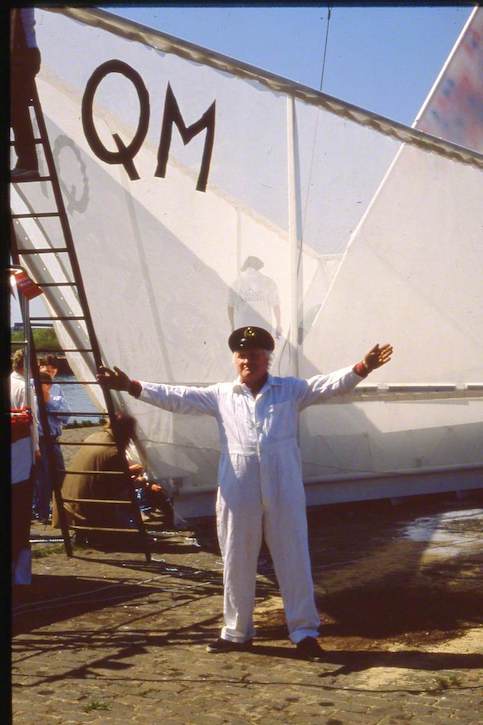
The launch of Wyllie's boat – also known as the 'Pride of the Origami Line' – echoed the celebratory launches of Clyde-built ships in bygone days.
Wyllie, then 68 and a retired Customs and Excise officer turned 'social sculptor', wore a white boiler-suit and captain's hat, and directed proceedings with the wit and flair of a Glaswegian P. T. Barnum.
A throng of photographers and journalists had been invited to witness the launch of the vessel, which had the letters 'Q. M.' inscribed on her hull.
An industrial chaplain blessed the boat, while the writer Naomi Mitchison cracked a bottle of Beck's beer across the stern. Greenock's Da Capo Choir, accompanied by a brass band, sang the catchy Paper Boat Song, composed by Wyllie for the occasion.
Like The Straw Locomotive, a giant straw train which, two years earlier, had hung from the same crane for six weeks before being set on fire, Wyllie's Paper Boat was a paean for the creative energy that had led to magnificent liners and locos being forged in the shipyards and engineering works of Glasgow. By the late 1980s, the yards that produced both had fallen silent.
'The Straw Locomotive' by George Ralston Wyllie (1921–2012) after it was set on fire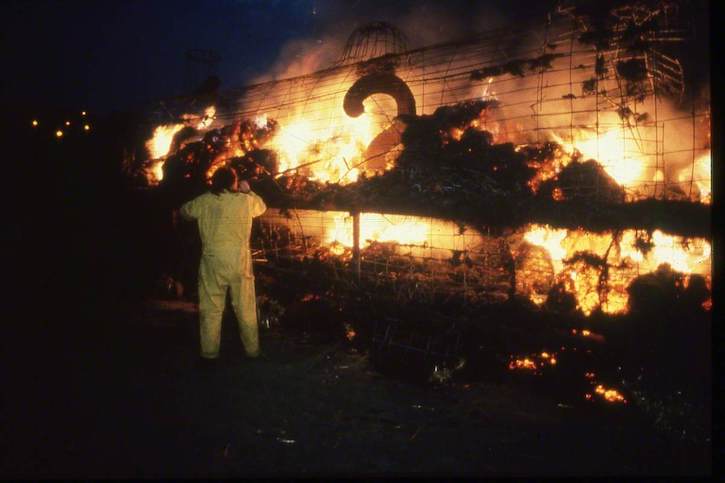
Wyllie maintained that he wasn't nostalgic about the loss of heavy engineering on the Clyde, but for the skills and energy that went into making things that looked good and worked well.
'Where was this energy now?', the former engineer asked as The Paper Boat went on a voyage to Ayr, Dumfries, Liverpool, London, Antwerp and New York.
'The Paper Boat' by George Ralston Wyllie (1921–2012) in New York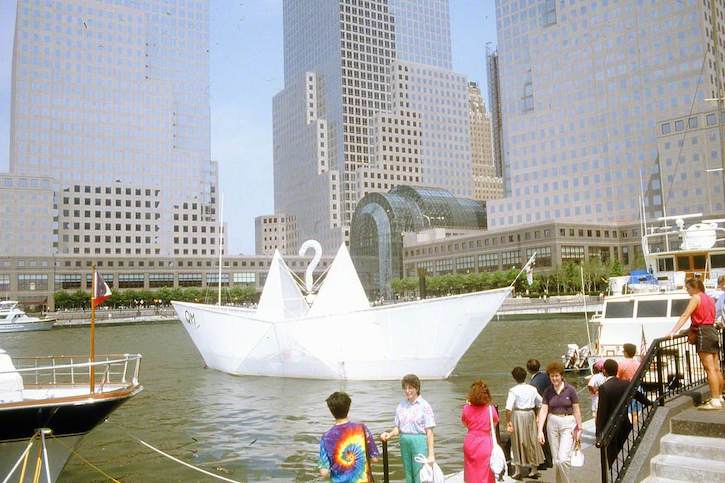
Wherever she sailed, the public 'got' The Paper Boat. In July 1990, New Yorkers took her to heart when she sailed up the Hudson and into the World Financial Center, accompanied by the Duke Ellington Band.
Her arrival was splashed on the front of The Wall Street Journal under the headline: 'Laugh You May, but Remember It's Floating and The Titanic Isn't.'
As his works on Art UK reveal, George Ralston Wyllie, who died aged 90 in 2012, is a tricky artist to pigeonhole.
In among material relating to the ephemeral Paper Boat and The Straw Locomotive, there are public works such as The Clyde Clock outside Glasgow's Buchanan Street bus station, and Monument to Maternity on the site of the city's former maternity hospital at Rottenrow.
There are also examples of early Wyllie works, such as Locomotive Descending a Staircase and Robin in a Cage (Puts all Heaven in a Rage).
Robin in a Cage (Puts All Heaven in a Rage)
1978
George Ralston Wyllie (1921–2012) 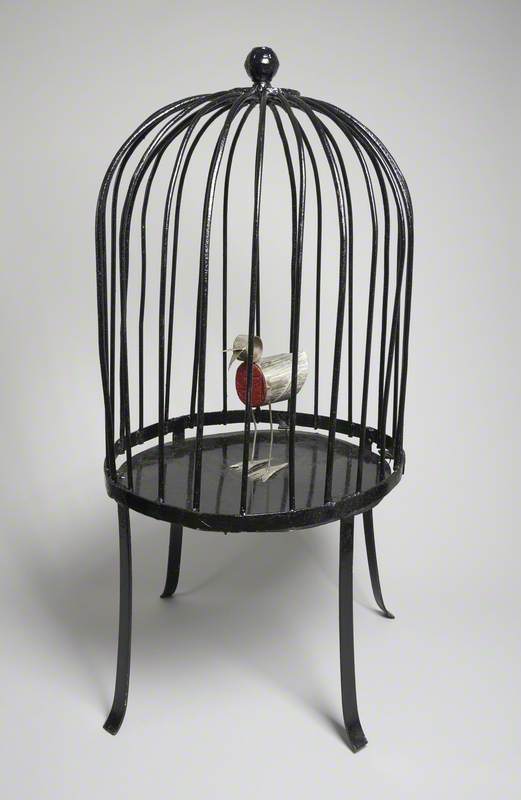
Root around and you'll discover source material from his play, A Day Down a Goldmine (ADDAG), which Wyllie not only wrote, but also performed in.
Staged throughout the 1980s in various guises, ADDAG won many awards, including an Edinburgh Fringe First.
A surreal satire of the world's banking systems, it also toyed with environmental themes. Wyllie's Original Earth Guarantee, one of many objects he made for the play, is so prescient it could have been written yesterday.
A seriously playful self-taught artist – dismissed by some in the art world for being too quirky – humour is writ large in many of Wyllie's works. He made Machine for Applauding Paintings (with Critic's Thumb Attachment), as a riposte to art critics following his first major solo exhibition in Glasgow in 1976.
Machine for Applauding Paintings (with Critic’s Thumb Attachment)
1976
George Ralston Wyllie (1921–2012) 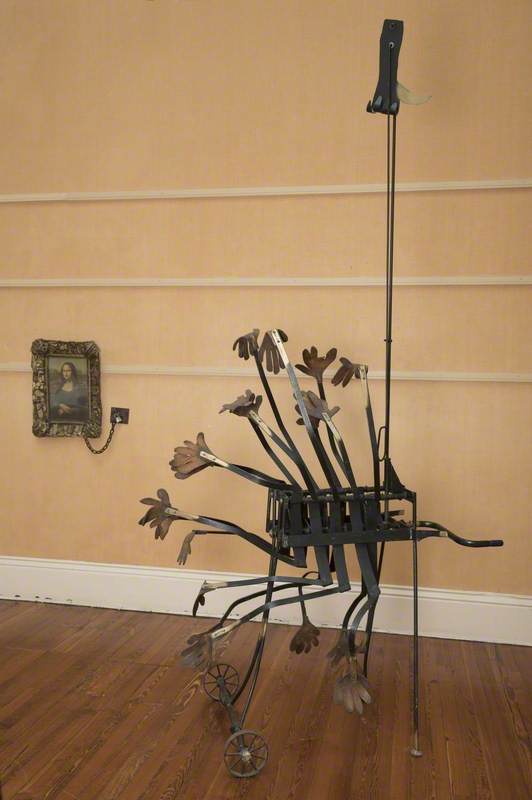
Around this time, Wyllie began using a question mark as a trademark. He wrote several years later: 'I called my first decent exhibition "Scul?ture" because I was never sure it was sculpture and am still not sure. So I took the "p" out of sculpture and put a question mark in.'
By the time he died, Wyllie was one of Scotland's best-known artists, and was mourned by First Ministers, fellow artists and members of the public alike. Not many artists can hack their way through the thickets of art-world pretensions, but Wyllie did so with native wit, flair and quicksilver intellect, and by making art people could relate to.
Wyllie took an unusual route to become a late-flowering, full-time artist. He served his apprenticeship as an engineer with the General Post Office before being called up by the Royal Navy in 1942. During his four years in the Navy, he saw active service in both the Atlantic and the Pacific. He was one of a handful of naval officers in Japan who witnessed first-hand the devastation wreaked by an atom bomb on the city of Hiroshima.
The experience of visiting the city a few months later percolated in his mind for decades. By the end of his life, he became obsessed with making art that concentrated on the environment and achieving 'equilibrium' – or balance – in nature.
To his dying day, he viewed his 'spires' as his favourite artworks out of all the work he made. These finely tuned, tripod-like figures all balance a stone, while harnessing air and equilibrium.
Wyllie started making art in his 40s. By then, having worked during the 1950s for Customs and Excise on the Irish border, he had moved back to Scotland to do a similar job based in Greenock. From the early 1960s, he and his wife Daphne, together with their two daughters, lived in an eyrie-like house in Gourock overlooking the Firth of Clyde.
Having unsuccessfully tried painting, he found his medium after taking a welding course at a local college in the mid-1960s. Inspired by what he called the 'semi-engineering' of an Arte Povera exhibition he saw at Kelvingrove Art Gallery and Museum in Glasgow, Wyllie built a workshop under his house and installed a welding plant.
At the age of 45, he began to create what he called 'crusty things' out of old bits of metal.
Works from this period include A Mortgage Climbing a Wall and Setting Out – both a nod to the economic pressure he was under at the time as a husband and father.
Wyllie was constantly experimenting, and when a scrap metal merchant gave him a load of old chrome car bumpers, he produced a menagerie of bumper creatures. Around this time, Wyllie also had a thriving side-line to his job in producing artworks for pubs, clubs and restaurants.
Daphne would often attempt to set the table for dinner, only to find that knives and forks had disappeared into one of her husband's sculptures around this period.
From the late 1970s, locals in Gourock identified the artist's house by the large stainless steel Shaman Eagle sitting on a granite plinth outside his front door.
Although he always said he felt like an outsider in the art world, his maturity allowed him to navigate his way through it well. One of the watershed moments in his creative life was attending artist and gallery owner Richard Demarco's 'Strategy: Get Arts' exhibition at Edinburgh College of Art for the Edinburgh Festival in 1970.
German artist Joseph Beuys, viewed by many as the father of contemporary conceptual art, took part in this exhibition at the behest of Demarco, and returned to Scotland a further seven times. Wyllie and Beuys, who were the same age, met in 1981.
The artworks held in public collections, many of which appear on Art UK, present the tip of the Wyllie iceberg. He was a prolific maker, performer and writer. In today's terminology, he was an influencer, regularly appearing in print, on air and on screen – and not just in Scotland.
Few artists garner the headlines or airtime which Wyllie achieved at his peak from the 1980s through to the early 2000s, when illness and old age crept up on him.
Wyllie's art, particularly his ephemeral social sculptures, influenced a generation of artists on the environmental art course at the Glasgow School of Art who worked with him as students and went on to become international stars.
Artists such as Douglas Gordon and Martin Boyce, who both went on to win the Turner Prize, acknowledge his influence. Wyllie would later joke he had to 'wallop them a bit hard for being too conceptual'.
There are hundreds of George Wyllie sculptures, installations and artworks out there which we'd love to feature on our new Mapping Memories George Wyllie Art Trail, marking his centenary year. He also inspired creativity in others. Can YOU help? More here: https://t.co/i4OQWcsGwp pic.twitter.com/GtXEqClTD6
— GeorgeWyllie (@ForTheBurds) January 12, 2021
Today, 100 years after his birth, a new generation is being introduced to his work thanks to a digital George Wyllie Art Trail. In addition, The George Wyllie Foundation is building a new gallery, The Wyllieum, in Greenock. It is due to open in 2022, and will celebrate and foster what former Makar Liz Lochhead described as his 'seriously playful' approach to art.
As George Wyllie and his old friend Joseph Beuys would have said, 'new beginnings are in the offing...'
Jan Patience, journalist, broadcaster and author
This content was supported by Creative Scotland
Further reading
Louise Wyllie and Jan Patience, Arrivals and Sailings: The Making of George Wyllie, Polygon, 2016
